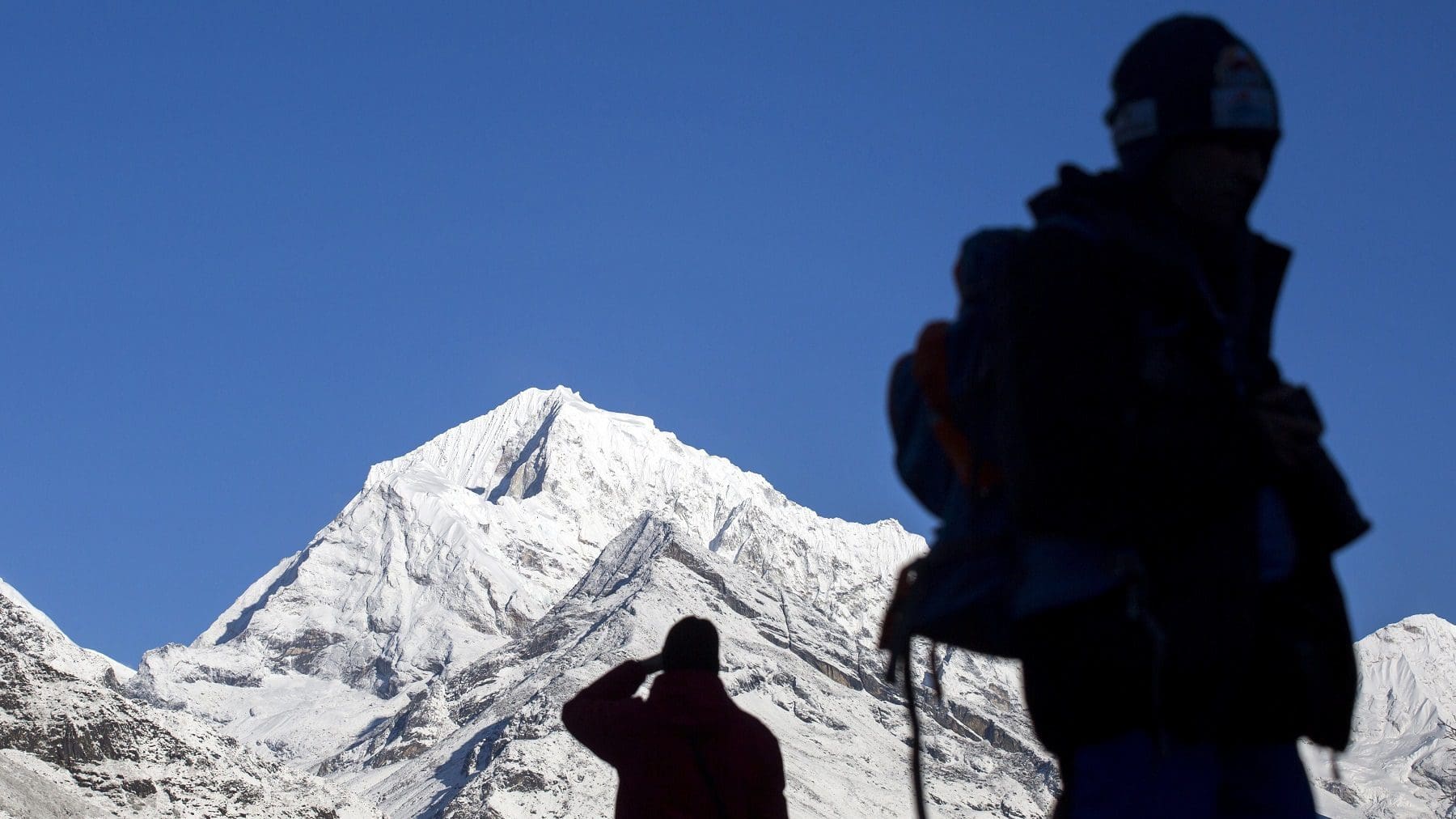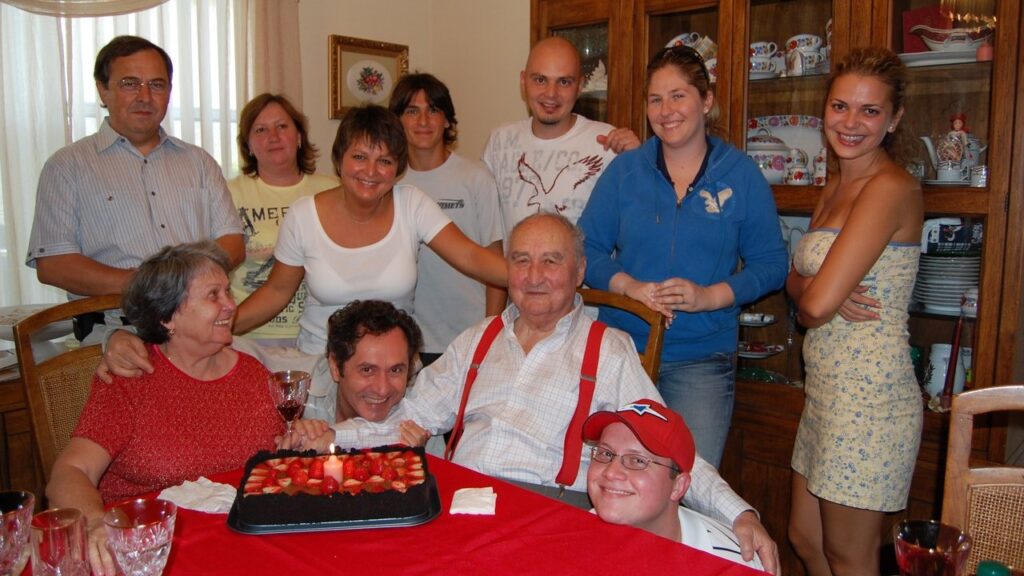Conquering the top of the world is a romantic yet difficult challenge only a handful of people have been able to accomplish. The stories about summiting the highest peaks in the world are as much about courage as about tragedy. The Hungarian experience of concurring the Himalayas is no different from any other nation’s—it is a mixture of success and great losses.
The first Hungarian group to the Himalayas set off in 1983, with the aim of reaching the top of Mount Satopanth in India (7,075 metres or 23,212 feet). After almost two weeks of climbing, however, half of the group decided to turn back. The maximum elevation this first Hungarian expedition to the mountain range reached was about 6,900 metres (22,638 feet). Tragedies that are so often associated with such challenging endeavours characterised this very first attempt, too—soon after the decision of turning back was reached, one of the members of the team fell off a cliff and disappeared.
It was 13 years later, in 1996, when the next group of Hungarian mountain enthusiasts set up to venture into the Himalayas. The 17-member strong team was led by Sándor Nagy. However, it was similarly unsuccessful in reaching the chosen peak, as the group turned back after one of its Austrian members tragically died. Five years later,
in 2001, two groups of Hungarians attempted to summit Mount Everest, but neither of them succeeded.
In 2002, under the leadership of Zoltán Ács, yet another team of Hungarians set their sights on the peak but failed to conquer it—the group of high-altitude mountaineers included legendary Transylvanian mountaineer Zsolt Erőss, who was part of the initial 1996 team as well.
Two members of the team who were unsuccessful in 2002, Zsolt Erőss and László Várkonyi, were not willing to give up the hope of summiting Everest. The two high-altitude mountaineers committed themselves to a second attempt. László Várkonyi managed to arrive at the southern peak at an altitude of 8,750 metres (26,500 feet). Meanwhile,
on 25 May 2002, Zsolt Erőss summited the peak, becoming the first Hungarian ever to reach the highest point on Earth.
Even today, the Transylvania-born Zsolt Erőss holds the unofficial title of the most successful Hungarian high-altitude mountaineer. He climbed ten out of the 14 peaks in the world that are above 8,000 metres (26,000 feet). In 2010, he lost his right leg in an avalanche, but not even that managed to stop him from devoting the remaining three years of his life to climbing. By the end of the same year in which he had the accident, he got close to summiting the Cho Oyu (the sixth highest mountain in the world), and a year later he reached Lhotse’s peak (the fourth highest in the world). In 2013, he climbed Kangchenjunga (the third highest peak), but he disappeared during his descent. His body was spotted and identified only a year later.
The first Hungarian woman to have scaled Everest was Anita Ugyan. She reached the peak first in 2009, then a year later she managed to do it again. The accomplished female high-altitude mountaineer also conquered the Gasherbrum I, Gasherbrum II, and Broad Peak (all above 8,000 metres, 26,000 feet) of the Karakoram Mountain range. The next Hungarian woman to summit Everest was Alexandra Németh ten years later, in 2019. As of today, she is the only Hungarian woman who has reached the highest points of all seven continents. Emil Neszmélyi was the first to climb up to Everest from the more difficult Northern side in 2016; while in 2022, he summited the peak from Nepal. Thereby, he is the first Hungarian who has climbed up to the top from both countries.
Márton Péter Price, a Hungarian-British dual citizen, was the sixth ethnic Hungarian to reach the top of the world. The youngest of these six mountaineers, Price was only 29 when he arrived at the top this May.
We should not fail to mention the unique accomplishments of sherpas, whose assistance and expertise is vital for non-local climbers. The Cambridge-educated Price for instance was assisted by one of the most accomplished sherpas in the world, Pasang Dawa, who summited Everest for the 26th time in early May this year, while on 22 May 2023, he made it to the top for his 27th time. Thereby, he is head-to-head with Kami Rita in the number of times he had reached the peak. A day after Pasang Dawa summited the 27th time, Kami Rita reclaimed his title as the man who reached the top of the world the most times, as on 23 May 2023, Rita scaled Everest for the 28th time.
While, as of today, six ethnic Hungarians have summited the peak, neither of them has managed to scale Everest alone without the help of sherpas and oxygen tanks. In total, there are about 7,000 mountaineers who have summited Everest, and only 221 of them did so without oxygen tanks. Before 2023, from Hungarian high-altitude mountaineers László Várkonyi got the closest to the peak, to a distance of some 80 metres (262 feet), without bottled oxygen. He however had to turn back due to adverse weather conditions. László Várkonyi tried eight times altogether to get to the top of Everest, and albeit he got close to the peak many times, he never actually reached it. In 2010, he died when descending after an unsuccessful attempt to reach the top.
Over ten years after László Várkonyi’s tragic death, in 2022, Szilárd Suhajda, a 40-year-old former English teacher, announced that he would try to summit the peak on his own, without any help.
Szilárd Suhajda was a very experienced high-altitude mountaineer—the first extreme peak that he conquered without an oxygen mask was the Broad Peak (the 12th highest in the world) in 2014. In 2019, he became the first Hungarian to reach K2 (second highest peak in the world, 8,611 metres or 28,251 feet, part of the Karakoram range) on his own, without oxygen tanks. Inspired by his successes, in January 2022, he announced that he is planning on summiting the Big Five. In May 2022, he successfully reached the top of Lhotse.
As a next step, Suhajda set up to conquer Mount Everest. He set off from the base camp on 21 May 2023,
and was supposed to reach the top three days later. His venture, which seemed to be succeeding initially, eventually went wrong on 24 May, when satellite phone contact was lost with him. A day later, information was received that the climber had been seen unconscious lying near the bottom of the Hillary Steps at about 8,780 (28,806) metres. While a rescue group of sherpas was immediately dispatched to help him, Szilárd Suhajda was never found. On 27 May, the rescue team was called back after all hope was lost that Suhajda would be still alive.
Szilárd Suhajda is beleived to have disappeared only 50 metres (164 feet) away from the peak,
thus he is the Hungarian who got the closest to the peak without help and tanked oxygen. His family’s wish is to leave Szilárd Suhajda’s body on Everest, if he is ever found. The young Hungarian man, a husband and a father, is now one of 200 mountaineers whose eternal resting place is on the mountain.
The disappearance of the accomplished Hungarian climber, who was a role model and inspiration to many, deeply shocked the country. Over the past week, the country commemorated the accomplishments, bravery and tragedy of Szilárd Suhajda. Among other displays of respect, a commemoration was held at a mountaineer memorial site in the Szemlőhegy cave, and a candlelight vigil was organised to honour his memory in his hometown of Békéscsaba.







